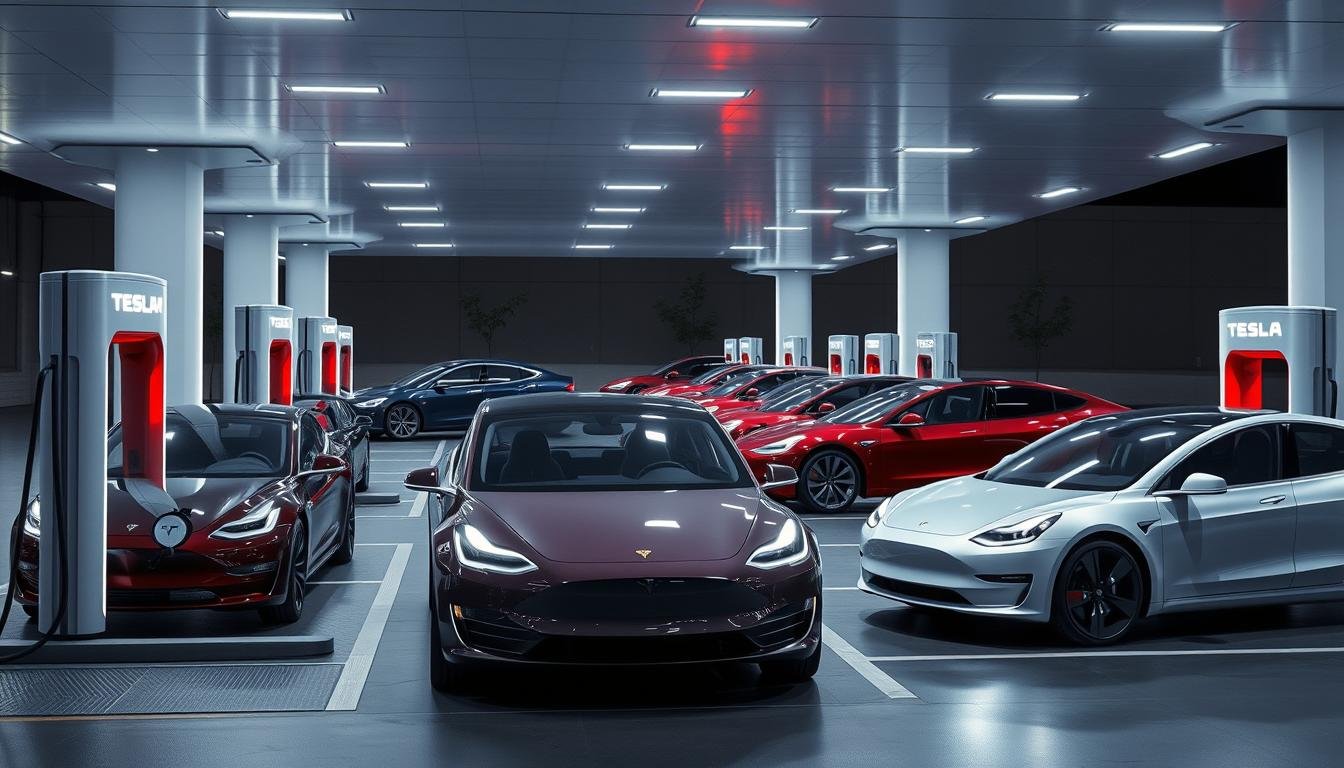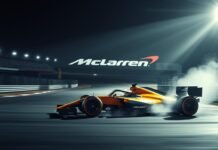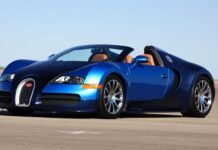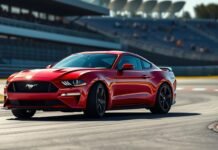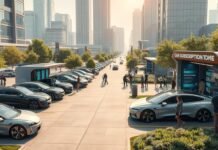Tesla’s Charging Network Is Opening Up—Here Are the EVs That’ll Soon Plug In
Tesla’s Supercharger network is now open to more electric vehicles. Starting in 2024, cars from Ford, GM, Rivian, and others will use the North American Charging Standard (NACS). This change will let over 50,000 stations charge tesla charging network compatible EVs.
Drivers of brands like Audi, Mercedes, and BMW will feel less range anxiety. tesla charging compatibility is now for more than just Tesla models. nacs ev support means faster charging for non-Tesla EV users.
Key Takeaways
- Over 50,000 Tesla Superchargers will soon serve tesla charging network compatible EVs from Ford, GM, and more.
- nacs ev support will let non-tesla ev supercharger users access ultra-fast charging at up to 200 miles added in 15 minutes.
- Automakers like Honda and Hyundai are preparing models for tesla supercharger access by 2025, ending the network’s exclusivity.
- Drivers of the Mercedes EQS, BMW i7, and Lucid Air will benefit from faster charging via NACS adoption.
- Adapters will allow existing EV owners to use Superchargers before native compatibility rolls out in new models.
The Evolution of Tesla’s Supercharger Network
Tesla’s Supercharger network has grown from a special perk for Model S and Model X owners to a key part of the EV world. The supercharger rollout has changed from a unique advantage to a shared resource. This change is changing how EV drivers travel long distances.
When everything works as expected, the Supercharger network is one of the most extensive and convenient EV charging systems. It makes long-distance travel easier than with most other electric cars.
tesla charging station access for its drivers, building loyalty. Now, the move to ev charger sharing marks a new chapter. By 2024, over 50,000 charging stalls globally will serve non-Tesla EVs, marking a historic shift toward 
Reliability was key to Tesla’s success. The company focused on three main areas:
- Strategic placement along major highways
- Engineered durability for 24/7 use
- User-friendly apps and payment systems
This infrastructure now supports tessla fast charger speeds of up to 250 kW. Charge times are now 15-30 minutes for most vehicles.
supercharger rollout expansion. Tesla now charges other brands to use its stations, turning competitors into customers. By adopting the NACS connector, automakers like Ford and GM gain access to over 40,000 Superchargers points. This speeds up industry-wide adoption.
By 2025, this shift could add 2,000 new Superchargers in the U.S., boosting tessla charging station access for all EVs. This move makes Tesla a leader in charging infrastructure. It also makes Tesla’s NACS port the North American standard.
Understanding the North American Charging Standard (NACS)
The tesla nacs explained standard is changing how we charge electric vehicles. It’s making it easier for all cars to use Tesla’s Supercharger network. Big names like Ford, GM, and Honda are joining in, making charging simpler for everyone in North America.
What Makes NACS Different from CCS and CHAdeMO
| Feature | NACS | CCS | CHAdeMO |
|---|---|---|---|
| Power | 250 kW | 350 kW | 500 kW |
| Bidirectional | Yes | No | No |
| U.S. Ports | 36,499 | 16,925 | N/A |
NACS is all about being simple and growing. Its tesla charging connector is smaller, which saves money on installation.
Technical Advantages of Tesla’s Charging Connector
- Compact design cuts installation costs by 20%
- Bidirectional charging enables vehicles to return power to grids
- Universal compatibility with 98% of Tesla Superchargers
The Industry’s Path to Standardization
The tessla nacs timeline is speeding up as more car makers join in:
- 2023: Ford partners with Tesla, starting NACS adapters in 2024
- 2025: GM integrates NACS into new EVs, with adapters for older models
- 2026: Honda releases tessla charging connector-equipped models
- 2025-2026: Hyundai, BMW, and Mercedes adopt NACS adapters
This move towards ev connector unification is making things clearer for drivers. It’s helping more people switch to electric cars.
Ford’s Roadmap to Tesla Supercharger Compatibility
Ford made history by becoming the first car maker to let tesla charger for ford cars. Starting in spring 2024, owners of the ford mustang mach-e tesla and F-150 Lightning can charge at over 12,000 Superchargers. They just need a tessla charging adapter.
This partnership means ford tesla charging for current EVs. And, 2025 models will have tesla charging adapter ports right in them.
- Phase 1 (2024): Adapters available for current Mustang Mach-E and F-150 Lightning
- Phase 2 (2025: New EVs will have native NACS ports
| Model | Compatibility Start | Method |
|---|---|---|
| Ford Mustang Mach-E | Spring 2024 | Adapter |
| F-150 Lightning | Spring 2024 | Adapter |
| 2025 Ford EVs | 2025 | Native NACS ports |
BlueCruise Charge Network users will see Tesla Supercharger spots on their maps. The tesla charging deals for Ford owners are not yet shared. But, this move helps with range worries by adding 20,000+ Supercharger spots to Ford’s network.
This partnership is a big step. GM, Rivian, and others will likely follow by 2025.
General Motors EVs Gaining Access to Tesla Chargers
General Motors is teaming up with Tesla to open the gm tesla supercharger network for its electric vehicles. This partnership, part of the tessla and gm charger deal, will let Chevrolet, Cadillac, and GMC EV owners charge at over 14,000 Superchargers across the country. It’s a big step towards making tesla charging for all GM drivers, combining Tesla’s vast network with GM’s Ultium Charge 360.
Upcoming Chevrolet Models with NACS Support
From 2024, Chevrolet’s chevy bolt tesla charger-ready models like the Equinox EV, Blazer EV, and Silverado EV will have NACS ports. Owners of the Bolt EV/EUV will get free adapters for Tesla charging. This makes long trips easier, reducing worries about running out of charge.
Cadillac and GMC Electric Vehicles Timeline
Cadillac’s LYRIQ and GMC’s Hummer EV will get gm tesla supercharger access by mid-2024. The LYRIQ AWD and the GMC Sierra EV will have NACS ports. Owners of older models like the Bolt can use adapters, making it easy to charge without buying a new car.
Adapter Solutions for Existing GM EV Owners
GM will offer free or low-cost adapters to current EV owners. This will make it easy to use Tesla stations. The adapters will be available in 2024, so drivers can charge at Superchargers even without a NACS port. The program includes support from dealers and a mobile app for easy payment and tracking.
Rivian Joins the Tesla Charging Ecosystem
Rivian owners will soon enjoy the benefits of a tesla and rivian partnership. Starting in 2024, the R1T pickup and R1S SUV will connect to Tesla’s Supercharger network. This cross-brand charging move is a big step in tesla ev partnerships.
It lets Rivian drivers use over 7,500 Tesla Superchargers in the U.S. and Canada. This is a huge advantage for Rivian owners.
- R1T and R1S adapters available by mid-2024 for current owners
- New Rivian vehicles to feature native shared charging infrastructure ports by 2025
- R2 platform models to include direct Supercharger compatibility at launch
| Network | Stations (2023) | Focus | Key Features |
|---|---|---|---|
| Tesla Supercharger | 7,500+ | Highway corridors | 250+ kW charging speeds |
| Rivian Adventure Network | 3,500 (expanding to 10,000 by 2025) | Outdoor destinations | Off-road amenities, free charging for subscribers |
Rivian’s shared charging infrastructure strategy combines its own Adventure Network with Tesla’s Supercharger network. This partnership reduces range anxiety. It also keeps Rivian’s off-road charging experience intact.
By 2025, drivers will have access to 95% of U.S. highways and scenic routes. Software updates will make it easier to find Supercharger locations on Rivian’s navigation systems.
Analysts think this partnership could increase Rivian’s market share by 5% by 2025. With Tesla’s Superchargers for highway travel and Rivian Waypoints for outdoor adventures, drivers will have unmatched coverage. This dual-system approach sets a new standard for cross-brand charging in the EV industry.
Japanese Automakers Adopting Tesla’s Charging Solution
Japanese car makers are changing their ways to use Tesla’s Supercharger network. They are focusing on tesla charging compatibility for their electric vehicles. Honda is teaming up with Tesla, making sure the tessla and honda ev Prologue and Acura ZDX can use Superchargers.
This partnership will link Honda’s Ultium-based EVs with Tesla’s charging system. It solves a big problem for tesla charger integration across different brands.
Toyota is switching its bZ4X and future cars to NACS connectors. This will give them access to over 2,000 Superchargers in North America. Nissan will offer adapters for older cars and build NACS ports into new ones starting 2025.
Subaru and Mazda are also planning to join in 2024-2025. They want to make sure their cars can use Tesla’s Superchargers too.
This move shows a big change for Japan. By 2025, more than 80% of new Japanese EVs in the U.S. will use Tesla’s network. It’s part of a bigger trend towards one charging system for everyone, making driving electric cars less stressful.
Hyundai and Kia: Tesla Charging Network Compatible EVs
Hyundai and Kia EV owners will soon use Tesla’s 20,000+ Supercharger stations. This is thanks to tesla and hyundai ev compatibility upgrades. The tesla and kia ev partnership lets the Hyundai IONIQ 5, IONIQ 6, and Kia EV6 use Tesla chargers via adapters starting 2024.
By 2025, newer models will have ioniq tesla charger integration. This means drivers can charge faster on long trips with ev6 supercharger access.
Current Hyundai and Kia EVs using the E-GMP platform will get hyundai tesla charging adapters. The IONIQ 5 and EV6 can charge at 250 kW speeds with Tesla’s V4 Superchargers. Future models will have native NACS ports by mid-2025, making adapters unnecessary.
| Model | Compatibility Method | Timeline |
|---|---|---|
| Hyundai IONIQ 5 | Adapter | 2024 |
| Kia EV6 | Adapter | 2024 |
| Hyundai IONIQ 7 (2025) | Native NACS port | 2025 |
Genesis GV60 owners will get adapters in 2024. The IONIQ 7 and EV9 will have native support by 2025. Hyundai’s partnership with Electrify America and IONITY in Europe ensures access to multiple networks. This balances Tesla compatibility with existing charging investments.
BMW, Mercedes, and European Brands Embracing NACS
BMW, Mercedes-Benz, and other European luxury car makers are now using Tesla’s NACS plug in their EVs. This change is a big move from their old CCS use in home markets. The tesla plug sharing plan lets these brands give drivers access to Tesla’s 20,000+ Superchargers in North America. This boosts luxury ev charging choices.
- BMW’s i4, i5, and iX will get bmw tesla charger support by 2025. This will happen through software updates and native ports.
- Mercedes-Benz’s EQS and EQE will use mercedes ev tesla support adapters in 2024. They will have full hardware integration by 2026.
- Audi and Porsche plan to add NACS ports to their 2025 models. They will also keep CCS connectors.
| Brand | Models | Compatibility |
|---|---|---|
| BMW | i4, i5, iX | Native ports (2025) |
| Mercedes | EQS, EQE | Adapters (2024), native (2026) |
| Audi/Porsche | e-tron GT, Taycan | 2025 models |
These changes show a smart move by European brands. They keep CCS for Europe but use european evs tesla for North America. For example, BMW’s 2025 iX SUV will have a dual-connector design for both markets. Experts say this could make drivers feel less worried about running out of charge, like with the $51,145 Audi Q4 e-tron.
By 2025, over 30 European EV models will support Tesla’s network. This will change how luxury buyers charge their cars across brands.
Adapters vs. Native Compatibility: What EV Buyers Should Know
When buying an EV, you face a choice. You can use transitional adapters or wait for cars with the nacs plug standard. This guide helps you understand the options for 2024.
Transitional Adapter Options
Car makers like GM and Ford are introducing nacs adapter release programs. The tesla adapter 2024 will cost between $50–$150, depending on the brand. These adapters let you use Tesla’s network but might slow down charging by 15–20%.
When you can get these adapters varies:
- GM: Free adapters for 2024 EVs, available Q2 2024
- Ford: $75 adapter kit for Mustang Mach-E owners by mid-2024
- Rivian: Included with purchase of 2024 R1T trucks
Native NACS Integration Timelines
Car makers are moving away from old connectors. Here’s when new models will have nacs transition built-in:
| Brand | Adapter Required Until | Native NACS Models Launch |
|---|---|---|
| Chevrolet | 2024 | 2025 Silverado EV |
| Nissan | 2024 | 2026 Leaf Plus |
| Volkswagen | 2024 | ID.4 NACS 2025 edition |
Cost vs. Performance
Adapters offer convenience but have downsides. tesla plug standard cars avoid bulk and wear issues. If you want quick access, adapters are good. But, for better efficiency, wait for 2025 models.
Tesla’s Supercharger network needs 250kW ports for full speed. Only native NACS vehicles support this.
“The nacs transition isn’t just technical—it’s a purchasing decision that impacts daily usability,” said industry analyst Clara Bennett.
For example, the 2024 Ford F-150 Lightning with an adapter charges at 160kW. Native NACS models charge at 250kW. Think about your charging needs and when you plan to buy.
The Supercharger Experience: What Non-Tesla Drivers Can Expect
As the supercharger for all brands grows, non-Tesla drivers can now use Tesla’s network. The tessla charging experience begins with the Tesla app. It shows where to charge and how much it costs.
New users should know about hardware differences. Older V2 stalls might not have the long cables of newer V4 stations. The supercharger user interface helps with payment and watching your charge. But, non-Telsa owners need to make sure their car’s NACS adapter fits the connector.
- Use third-party apps like PlugShare to track stall compatibility before arrival.
- Adapters for non-Tesla cars add 10-15 minutes to setup time due to connector alignment challenges.
- Peak hours in cities like LA see waits up to an hour, though Tesla’s Virtual Queuing pilot aims to reduce congestion.
Early users have mixed experiences. Most sessions finish in 30 minutes, but 1% face delays. This can be due to hardware issues or cold weather. Drivers should charge 20-30 miles before they arrive to avoid long waits.
This move towards a public ev charging standard might help with range anxiety. With 60,000 global Superchargers, drivers have reliable access to fast charging. But, managing adapters and adapting to hardware is a challenge. As more brands join, the network could change how EV owners travel long distances.
Charging Speed Comparison: Tesla vs. Other Fast-Charging Networks
Real-world ev charging speed changes a lot based on the network and conditions. Tesla’s tessla v3 supercharger stations can charge at 250kW. But, traffic and the battery’s state can slow it down.
tesla vs ccs comparisons show Tesla’s network often beats CCS at peak times. But, newer CCS 350kW stations are closing the gap.
“Tesla’s V3 Superchargers can add up to 200 miles in 15 minutes, but real-world times can stretch to over an hour during peak use.”
Real-World Charging Rates Across Different EV Models
- Tesla Model S Plaid: 250kW on V3, adds 100 miles in 10 minutes under ideal conditions.
- BMW iX: 190kW on CCS, needing 20 minutes to reach 80%.
- BYD Han: 400km (249 miles) in 5 minutes using BYD’s Super-e platform (1,000kW), though limited to BYD vehicles).
Cold batteries or high demand slow ev charging speed. Tesla’s v4 supercharger rates reach 350kW. But, most EVs can’t handle that power yet. CCS stations peak at 350kW but face rollout delays.
V3 and V4 Supercharger Capabilities
Tesla’s tessla v3 supercharger stations support 250kW. The newer v4 supercharger rates hit 350kW. A V4 can charge a Model 3 from 10% to 80% in 12 minutes—faster than most CCS networks.
tessla vs ccs comparisons highlight Tesla’s edge in reliability. Even if peak charging speed comparison numbers overlap.
- V3 Supercharger: 250kW average, 200-mile range in 15 minutes (best case).
- V4 Supercharger: Up to 350kW, 115 miles in 5 minutes for compatible Teslas.
BYD’s 1,000kW tech hints at future ev charging speed breakthroughs. But, Tesla’s 60,000+ global stations ensure unmatched scalability. For now, Tesla’s network remains the fastest for most drivers.
How Tesla’s Network Expansion Benefits All EV Owners
Tesla’s supercharger network growth plans to add 1,000 new sites by 2025. This is thanks to federal NEVI grants. The focus is on fast tesla charger expansion with V4 Superchargers that can charge up to 325 kW. Over 20,000 stations will also support non-Tesla EVs, making it easier to find a charge anywhere in the country.
Planned Supercharger Growth Through 2025
Key targets include:
- Deployment of 325 kW V4 Superchargers in 75% of new locations.
- 30% of stations to prioritize rural areas, per NEVI guidelines.
- Integration with Electrify America’s 30% network expansion plans.
Impact on Rural and Interstate Charging Access
By 2025, rural ev charging gaps will shrink. Toyota’s partnerships aim to reach 50+ underserved counties. On highways, interstate supercharger corridors will cover 95% of major routes by 2025. Ford EV drivers already see DC chargers within 18 miles on most highways.
With Electrify America’s 16 million sessions in 2023, a shared infrastructure is forming. Non-Tesla owners will have access to 20,000+ Superchargers. This means shorter wait times and less range anxiety for all EV owners. The result is a system where all EVs can charge quickly and reliably across the country.
Navigating and Paying for Supercharger Sessions in Non-Tesla Vehicles
Drivers of non-Tesla vehicles need to create a tessla charging account through the Tesla app to use Tesla Superchargers. This supercharger app integration makes it easy to find stations, start charging, and pay for ev charging payment online. To start, you must register a payment method and link your vehicle details to show you’re eligible for non-tesla charging on tesla stations.
- Install the Tesla app and create a Tesla account
- Verify your non-Tesla EV’s compatibility with NACS connectors
- Add payment details to enable automatic tessla charging payment processing
- Use the app’s map to find open Supercharger stations and reserve a spot
Starting a charge is simple with the app’s “Start Charge” button. The cost is based on how much energy your vehicle uses. Non-Tesla users pay more, usually $0.28–$0.40 per kWh, compared to Tesla owners’ $0.25–$0.30. The app shows how much you’ll pay before you start.
After charging, you get an email receipt. This helps you keep track of your charges.
Soon, there might be special deals for those who charge a lot, like Tesla’s current plans. You can watch your battery level and how long you’re charging in real-time on the app. This way, you won’t overpay. All your charges will be linked to your tesla charging account, making it easy to see your history. If you have any issues, Tesla’s customer support can help right away.
What This Means for the Future of EV Charging Infrastructure
As Tesla’s Supercharger network opens to non-Tesla vehicles, the ev charging industry is changing. Competitors like Electrify America and ChargePoint must innovate or adopt Tesla’s NACS connector. This could change how they compete, pushing them to improve and expand their services.
Potential Effects on Competing Charging Networks
By June 2024, Honda and Acura will have access to over 20,000 Tesla Supercharger stalls. Tesla’s influence is clear, but rivals are not idle. Electrify America plans to add 1,000 NACS ports by 2025, and EVgo is testing dual-port stations.
The charging station future might see networks with both NACS and CCS connectors. This could be a big change for the industry.
“The industry is moving toward a unified system, but it will require collaboration across automakers and governments,” said an industry analyst.
The Road to Universal EV Charging Standards
NACS adoption is speeding up. By 2030, it could be the main standard if Ford, GM, and Mercedes keep moving away from CCS. A study found 68% of U.S. EV drivers want networks that work with Tesla.
By 2025, Honda plans to offer 100,000 charge points across the U.S. They will mix Tesla Superchargers with their own networks.
| Automaker | Compatibility Start Date |
|---|---|
| Ford | 2023 |
| General Motors | 2024 |
| Rivian | 2024 |
| Mercedes-Benz | 2024 |
| Nissan/Polestar/Volvvo | 2024 |
Regulatory changes could help this shift happen faster. California’s 2025 rule requiring NACS in new EVs shows government support. This means drivers will face fewer adapters and faster charging, making long trips easier.
The future ev infrastructure might focus more on working together. This could help both drivers and car makers.
Conclusion: A New Era of Electric Vehicle Charging Accessibility
Tesla’s Supercharger network now welcomes non-Tesla EVs, a big step towards ev charging accessibility. Brands like Ford, GM, and Honda are adding Tesla’s NACS connector to their cars. This move helps standardize ev charging across different brands.
This change helps solve ev range anxiety solution by giving drivers access to over 12,000 Superchargers. It removes the need to worry about charging limits based on the car brand.
By 2025, Hyundai and Honda will also join Tesla’s network. This growth supports an ev adoption boost. It makes drivers more confident in finding charging stations everywhere.
Software updates and adapter programs are making older EVs compatible with Tesla’s network. This ensures everyone can use the Superchargers easily.
While there are challenges like making Supercharger access fair and growing the network, this change is a big step. It brings us closer to a future where charging is easy and green. As more cars use NACS, charging will get faster and simpler. This change makes electric driving easier for everyone, thanks to Tesla’s leadership.
FAQ
What is the North American Charging Standard (NACS)?
The North American Charging Standard (NACS) is a new charging method. It was created by Tesla and is now used by many car makers. It aims to make charging electric cars easier and more efficient for everyone.
How does Tesla’s Supercharger network compare to other charging networks?
Tesla’s Supercharger network is known for being reliable and wide-reaching. It’s placed in key spots and is easy to use. This makes it better than other networks like Electrify America and EVgo.
What EV models will have access to Tesla’s Superchargers?
Cars from Ford, General Motors, and Rivian will soon use NACS. This includes the Ford F-150 Lightning, GMC Hummer EV, and Rivian R1T, among others.
Are there any adapter solutions available for non-Tesla EVs to use Superchargers?
Yes, many companies are making adapters for non-Tesla EVs. These adapters let them use Tesla’s Supercharger network. This makes it easier for them to charge up.
What are the charging speed capabilities of Tesla’s Superchargers?
Tesla has different Supercharger types. V3 stations can charge up to 250 kW. V4 stations can charge up to 350 kW. This means fast charging for compatible cars.
How will Tesla’s charging network expansion impact overall EV adoption?
Tesla’s Supercharger network opening to non-Tesla cars will help more people buy EVs. It will make driving electric cars less stressful. This could make more people choose electric cars.
What pricing structure can non-Tesla vehicles expect when using Superchargers?
Non-Tesla cars might pay different prices at Superchargers. The cost could change based on the car and how long you charge. The exact price depends on these factors.
What does the partnership with Ford mean for their EV customers?
Ford’s deal with Tesla lets Ford EV owners use Tesla’s Superchargers. Ford plans to offer adapters in 2024 and NACS ports in 2025. This will make charging easier for Ford EV owners.
Are other automakers beside Ford and GM adopting NACS?
Yes, Hyundai, Rivian, and Japanese car makers like Honda and Toyota are also using NACS. This will make it easier for different electric cars to charge together.
How can users find Supercharger locations?
You can find Superchargers on Tesla’s app or through apps like Google Maps. These apps help you find charging spots easily.
